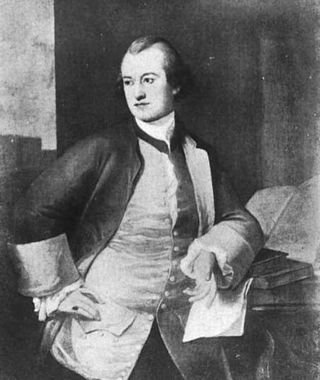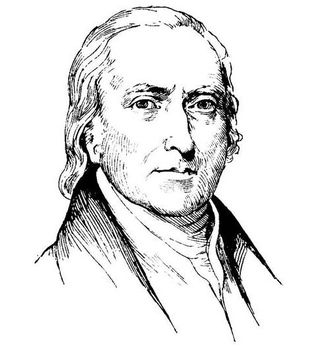
John Morgan, MD
The Perelman School of Medicine at the University ofPennsylvania is the oldest medical school in the nation –- and it’s gettingolder every day. In fact, it is 99.3percent of the way to reaching 250 years old. On May 3, 1765, the trustees of the College of Philadelphia (theUniversity’s predecessor) approved the plan for a medical school presented byJohn Morgan, MD. At the College’scommencement later that month, Morgan read his “Discourse upon the Institutionof Medical Schools in America.” Laterprinted as a pamphlet, the presentation required a second day for Morgan tofinish. “What I am about to propose,” hebegan, “is a scheme for transplanting medical science into this seminary, andfor the improvement of every branch of the healing art.” Ambitious indeed! In November of that year, both Morgan andWilliam Shippen Jr., MD, “his former colleague and co-strategist” delivered theirfirst medical lectures. Come May 2015,it will be 250 years since Morgan and Shippen received the official go-aheadfor medical instruction.
Why did David Y. Cooper III, MD, and Marshall Ledger, PhD, theauthors of Innovation and Tradition atthe University of Pennsylvania School of Medicine: An Anecdotal Journey (Universityof Pennsylvania Press,1990), use the adjective “former” about Shippen? Ah, that is another story, for anothertime. Suffice to say that Shippen feltMorgan had jumped the gun and persuaded the college trustees on his own,despite the fact that the men had shared ideas about establishing a medicalschool in the colonies. But when Innovationand Tradition, the most recent history of Penn’s medical school, waspreviewed in Penn Medicine Magazine,Shippen was described as “The Other Founder.”
Fortunately, there is no argument about Penn’s being thefirst medical school. George W. Corner,MD, ScD, LLD, author of Two Centuries ofMedicine, which was published during the medical school’s bicentennial yearof 1965, had high praise for Morgan’s vision:
Morgan’splan, in fact, comprised practically all the elements of medical instructionthat after long, costly trial and error the American profession has since foundto be essential. Affiliation with a university, qualified professors, thoroughpremedical preparation of the students, a planned curriculum with well-definedcourses of instruction introducing the basic scientific studies before clinicalwork, close relations with a teaching hospital, a library, high standards forgraduation -– all these are mentioned and most of them expounded at length.
It’s not surprising, then, that the medical school hasaccumulated many “firsts” in its history.
In 1768, Adam Kuhn was appointed the first professor of botany and “materiamedica” in America -– closest to what we would now call pharmacology.
Kuhn, a Pennsylvanian, studied under CarolusLinnaeus in Sweden before returning to the colonies. The school had the firstchair of chemistry in America, in the person of Benjamin Rush, MD.
Last year,
Penn Medicine ran an article that considered Rush’s seminal textbookon psychiatry, the first of its kind in the United States. It appeared in 1812.Another name that looms large in Philadelphia history is Caspar Wistar. He wasthe first chair of “institutes of medicine,” a term then used by the Universityof Edinburgh to denote the study of functions of the body –- in essence, physiology.
In 1811, Wistar published
A System of Anatomy, the first textbookin the nation on that subject.
Although William Shippen was the first professor of anatomyin the medical school, that topic traditionally included surgery. It was only in 1805 that Philip Syng Physickassumed the first independent chair of surgery. In that role, he became “one of the first of the New World physicians togain a reputation among his European counterparts,” as Innovation and Tradition put it. He is not the only Americansurgeon to be called “the father of American surgery” –- there is an upstart whopracticed at Johns Hopkins Hospital many years after Syng’s death -– butostensibly neutral sites like Wikipedia acknowledge Physick.

Philip Syng Physick
Among his many accomplishments andinnovations, he designed and made new instruments to treat the urinary tract;introduced an improved technique for setting thigh fractures; performed thefirst surgical repair of an arteriovenous aneurysm; and pioneered the use ofstomach pumps in cases of poisoning. In addition, he conceived of a surgical treatmentfor abdominal fistulas and developed a technique for cataract surgery.According to Innovation and Tradition,“Probably his greatest and most lasting contribution to surgery was his work onabsorbable sutures.” The ordinarysutures of silk or flax that were used then prevented wounds from healing. Syngbegan to use animal ligatures in their place.
On a somewhat different plane, Penn’s Department of Surgeryhad the nation’s first endowed professorship in surgery.
In 1877, a gift of $50,000 from SarahRittenhouse Barton created the John Rhea Barton Professorship of Surgery, inhonor of her husband. D. Hayes Agnew, then one of the most respected surgeonsin the United States, was the first to hold the chair.
And perhaps you have been racking your brain trying toremember the first president of the American Medical Association. The answer: Nathaniel Chapman, an alumnus andprofessor at Penn’s medical school, who held the chair of the theory andpractice of physic from 1816 to 1850. Delegates from 28 American medicalschools met in Philadelphia in May 1847 to found the association, and two otherPenn faculty members were elected officers as well.
These are only a few of the “firsts” associated with Penn’smedical school. As its 250thanniversary draws nearer, we’ll look at others, as well as other interestingpeople and events in its history.
What may be a surprise, however, is that Penn’s medicalschool did not confer the first MD degree in the colonies. That accomplishment goes to King’s College inNew York City, later to be known as Columbia University. The degree originallyoffered by the College of Philadelphia’s school was a bachelor in physic(medicine), apparently modeled on the customs of Oxford and Cambridgeuniversities, which granted the MD only after the candidate had done additionalclinical work or research. King’s College awarded its sole degree, the MD, totwo candidates in 1770. One year later, Penn’s school awarded the MD degree tofour candidates who had earned the MB degree from the school in 1768.